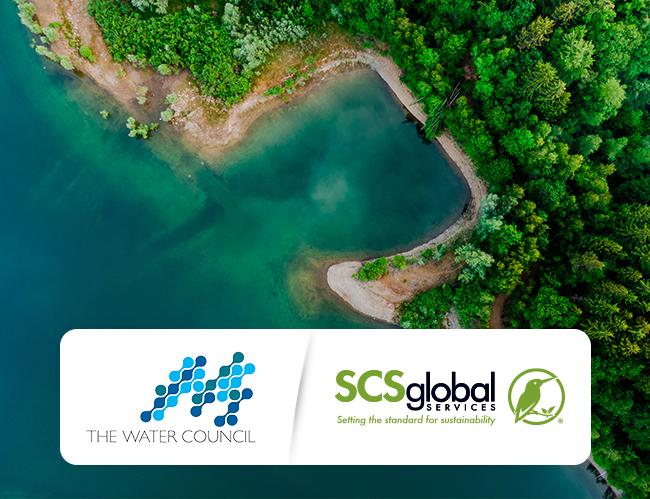The Current State of Water Stewardship
By Lauren Enright, Program Manager, Water Services at SCS Global Services and Matt Howard, Vice President for Water Stewardship, The Water Council

The Problem
Water-related risks are multiplying for all types of businesses in most regions globally. The intensification of such risks is largely due to a reliance on natural resources for the products we buy. Climate change-enhanced conditions result in too much water, not enough water, or water of poor quality. No matter where a site or organization is located, water is indispensable for the production of most commodities we purchase. Water is crucial to the operations, health, and welfare of employees and ensures we have food on the table. More than ever, stakeholders expect organizations to address shared water-related challenges and opportunities at their site and beyond their boundaries.
Confusion Is Holding Back Progress
Despite the increasing understanding of how much and to what degree various sectors depend on water resources and their corresponding impacts, it remains a struggle to onboard companies into active water stewardship participation. There are a variety of reasons for this, including: confusing lexicon; overlapping initiatives; lack of awareness; focus on monitoring and reducing carbon and methane; multiple water organizations and “entry” points; poorly understood return on investment; resource constraints; and the perception that water remains plentiful even in areas of scarcity.
Water Stewardship Requires Proactive Long-Term Thinking
The first step an organization can take is to conduct a materiality, use, and impact assessment to understand more thoroughly water-related dependencies. Also important is quantifying how an organization is sourcing and consuming water throughout the year. Do some sites have a higher tolerance for lower water quality? Are other sites being reassessed to comply with local and regional regulations on groundwater? The key is the prioritization of site(s) that require the most attention, investment and implementation of data monitoring, resources, innovative technologies, and water reuse technologies to offset water usage. Investors and other stakeholders are prioritizing businesses that demonstrate credible and impactful water stewardship practices, including adaptation and innovation with respect to improved recycling and water efficiency measures.
Lowering the Barriers to Entry
For organizations of all sizes, logical entry points to water stewardship can occur at different levels: enterprise-wide, operational site, across the supply chain, and at a product-based level. We value existing environmental management systems (EMS), and we see water as a nexus issue that brings many co-benefits, such as protecting nature and enhancing biodiversity. The integration of innovative technologies can be valuable to observe and predict changes, to understand and analyze impacts and risks, and ‘to take action’ with technologies that help build a climate and water resilient future.
Unprecedented Opportunity at Our Feet
Companies of all sizes have an opportunity to set rigorous targets and goals — and to take decisive action to achieve those goals. Not only setting but also meeting those goals showcases to stakeholders an organization’s progress year over year and demonstrates credibly that mitigating actions target the highest priority impacts and risks. Collectively, organizations have an opportunity to rethink, reimagine, and reshape their approach to water management by using sensors and data to go above and beyond.
The Water Council and SCS Global Services, Trusted Partners
The Water Council in partnership with SCS Global Services stand as trusted providers for organizational water stewardship. To address water-related risks and opportunities, it is critical that strategic action starts at the enterprise-level, is implemented at the site-specific level, and reaches across an organization’s entire supply chain. Together, The Water Council and SCS Global Services offer a holistic approach to comprehensive water stewardship, targeting action from the board room to the shop floor. By valuing accountability, credibility, transparency, and neutrality, organizations can stand out with verified and validated claims for water stewardship.
For more information about The Water Council, visit www.thewatercouncil.com.
For more information about SCS Water Stewardship programs, visit www.scsglobalservices.com/services/water-stewardship.
Have questions about water stewardship claims? Please reach out to SCS' water services program manager, Lauren Enright: LEnright@scsglobalservices.com.

